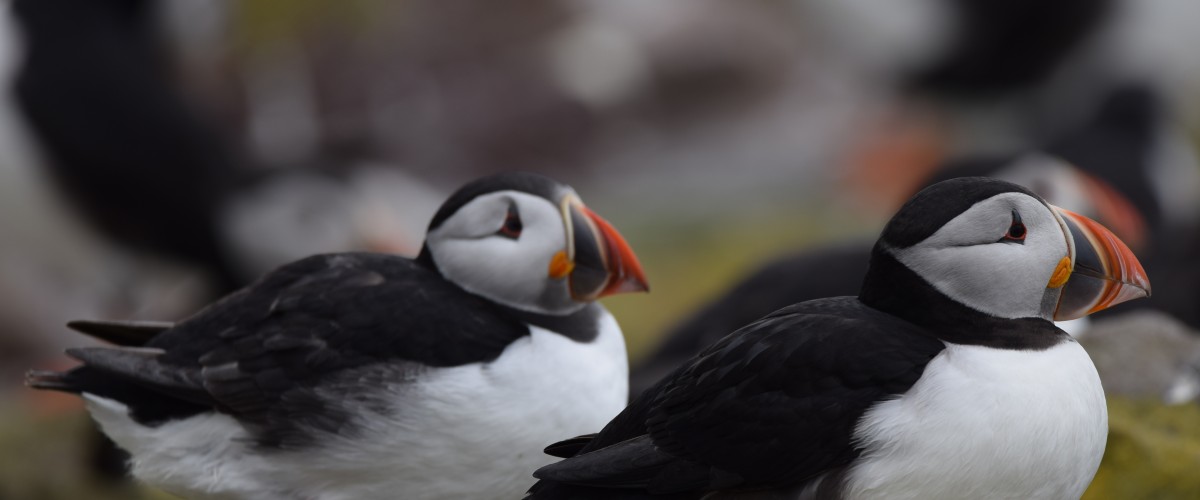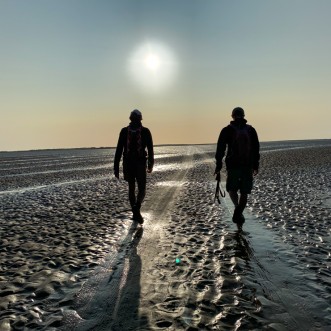Puffins are Lundy’s most popular bird. The best time to see them is between the end of April to July, when the cliffs are filled with them. Ten other species of breeding seabirds may also be seen during these times.
The best place to see puffins on Lundy are Jenny’s Cove and St. Phillip’s Stone – both on the west coast, although some may also be seen on the island’s north coast.
Other Lundy seabirds include Manx shearwaters. The best way to experience them is to stay on the island overnight and watch them return from feeding at sea to their burrows in the cliffs under the cover of darkness.
Guillemots and razorbills are found along the west coast, with favourite viewing locations being Jenny’s Cove and St. Mark’s Stone. Razorbills are identified by their black backs and white chests, as well as their broad black bills striped with white. Guillemots have chocolate-brown backs with white plumage, and pointed single-colour bills. The razorbills nest in colonies, but not in very close proximity. In comparison, guillemots are usually seen high densities, with large groups packing together on narrow ledges. The nesting period for razorbills and guillemots is between March and July.
Lundy is also home to a number of nesting gull species, particularly herring gulls, lesser black-backed gulls and greater black-backed gulls which nest on the cliffs of the west and east coasts. Black-legged kittiwakes are also found along the west coast – they can be recognised by their black wing tips, black legs and yellow bill. Kittiwakes nest on the sheer cliffs from February to August. Fulmers are also common on Lundy between March and September, especially near Jenny’s Cove where they are easily spotted gliding over the water.
For further information – recent bird sightings on Lundy are reported in the Lundy Birds Blog and more information on Lundy’s birds can be found on the Birds of Lundy webpage.


